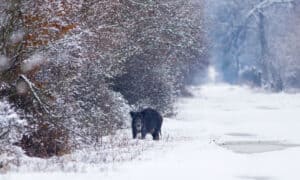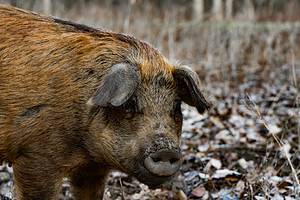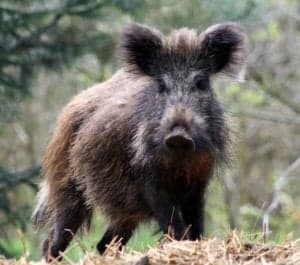The wild boar is a suid with a stout body, that is hefty and enormously developed, yet short. With the exception of Antarctica, wild boars are widespread throughout the world. Regions of Europe and Asia make up this species’ native habitat. Wild boars have also been brought to North and South America.
These creatures are presently considered intruders in California and the Southeast of the United States. The open savanna regions, forested woods, farming regions, jungles, and swampy swamplands are the ideal habitat types.
In general, wild boars reside in locations with a steady supply of water and thick vegetative cover to protect them from other wild animals. A video on TikTok shows a sounder of wild boar running across the road.
Watch the Wild Footage!
A sounder, the name for a group of wild boar, is often made up of six to 20 animals. Despite their ungainly appearance, these animals are capable of reaching speeds of up to 30 miles per hour.
Experts have observed wild pigs escaping traps that are six feet high. These critters have been recorded jumping over barriers that are about three feet high. This is quite impressive for their stout body composition.
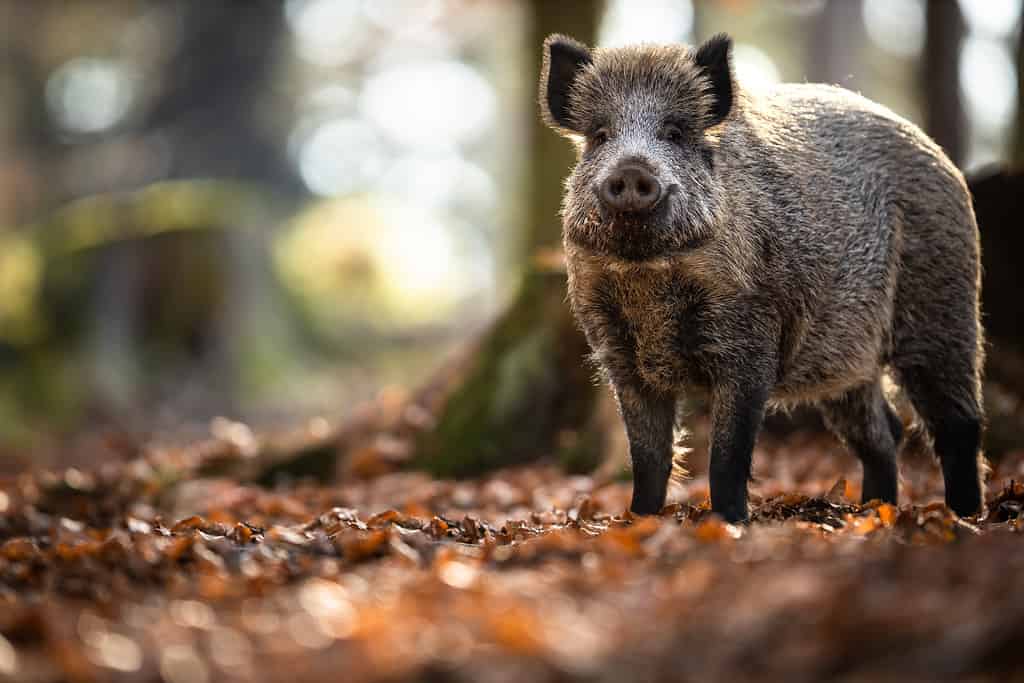
Although cute, these animals are wildly destructive.
©iStock.com/ViktorCap
Are Wild Boars Dangerous to Humans?
Wild boars are raised for farming and hunting. Boar populations frequently cause major issues because of their propensity for digging (rooting), which can be incredibly harmful to the ecosystem. They destroy gardens, render land unfit for farming, enlarge roadways, and have even excavated cemeteries!
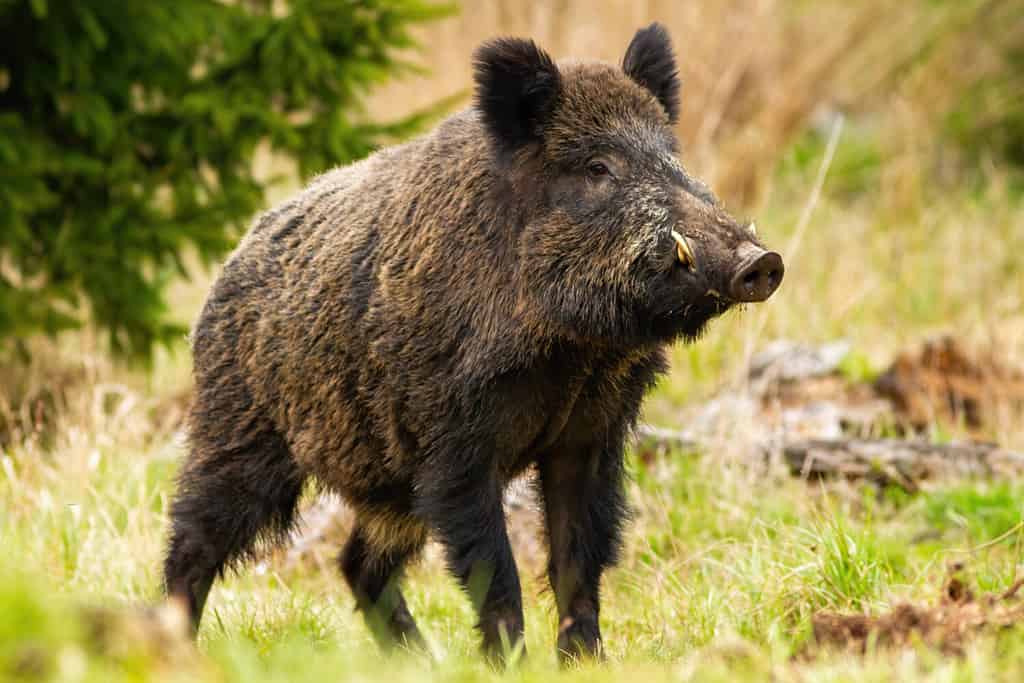
Wild boars are allowed to be raised for farming and hunting.
©WildMedia/Shutterstock.com
According to estimates, wild boars alone cost the United States economy $1.5 billion in annual damage. These animals can also be violent toward people and animals and spread sickness to livestock and wild animals. Many regions kill these creatures or permit hunting on them as a result of the destruction they may wreak.
Wild Boar Lifestyle
They have a strong body structure, huff loudly, and frequently have sharp tusks, making them frightening animals to come upon. Yet, unless trapped or if a female is defending her piglets, they hardly ever attack people. Many nations raise wild boar for food, but they frequently stray and cause significant harm to the environment and other animals.
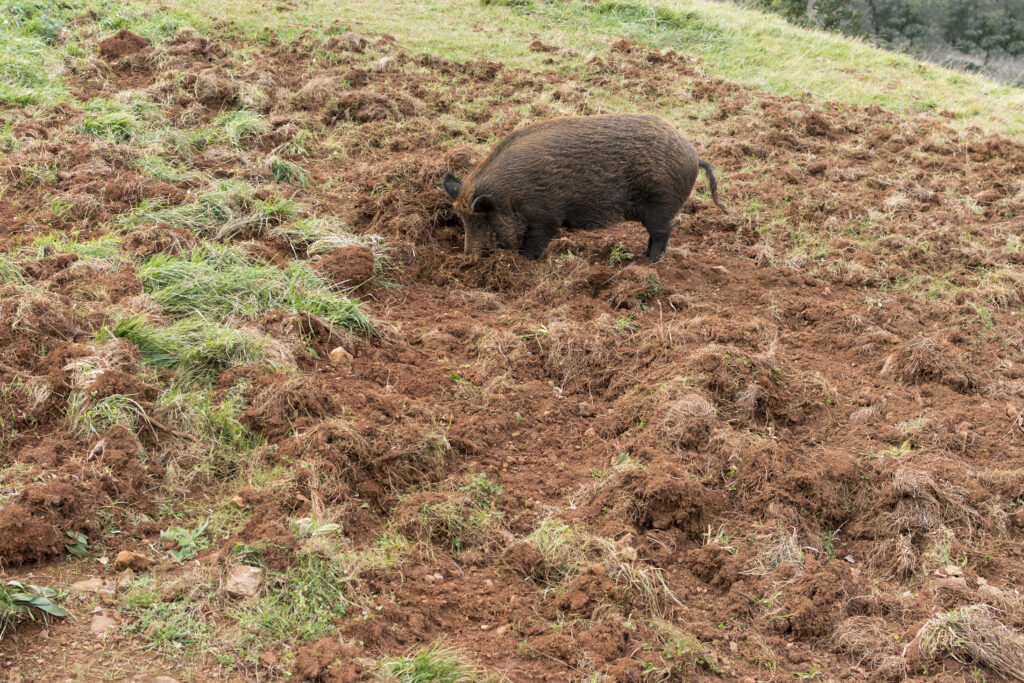
Wild boar rooting in the ground destroying the grass.
©ENRIQUE ALAEZ PEREZ/Shutterstock.com
It’s not uncommon for homeowners in states such as Ohio to suffer landscaping damage from wild boars. These creatures are often kept as pets. The people that own them tend to get them when they are just piglets.
Domestic pigs and wild boars require virtually the same care because of their close resemblance. Yet because of their ferocity, they need sturdier enclosures and demand additional caution when being handled.
That being said, they are not suitable for households because they are incredibly disruptive and challenging to housebreak. They may also exhibit sudden aggression toward their owners and domestic pets.
The photo featured at the top of this post is © iStock.com/JMrocek
Thank you for reading! Have some feedback for us? Contact the AZ Animals editorial team.



